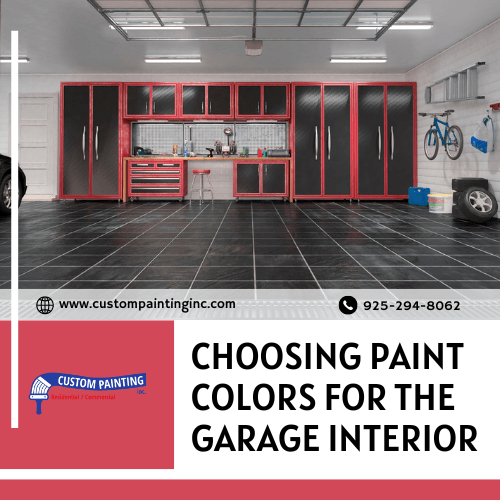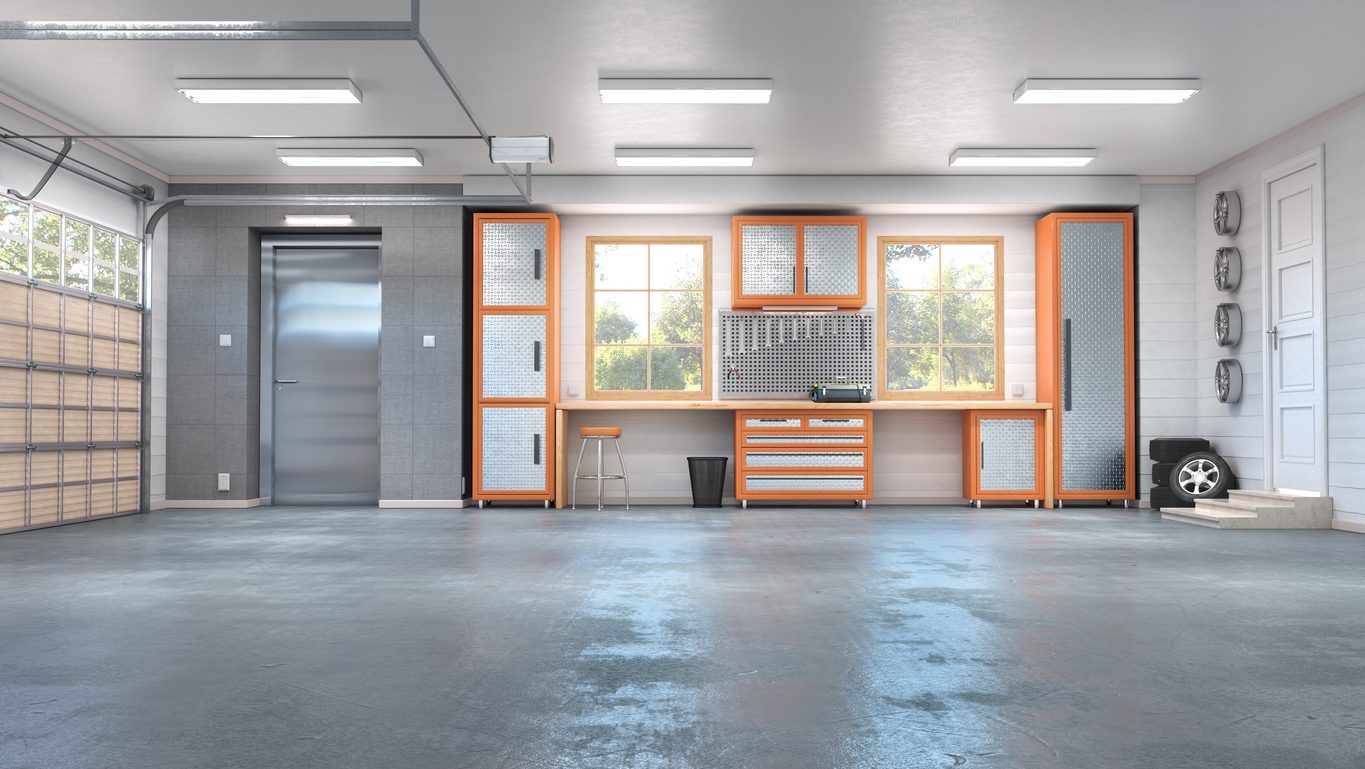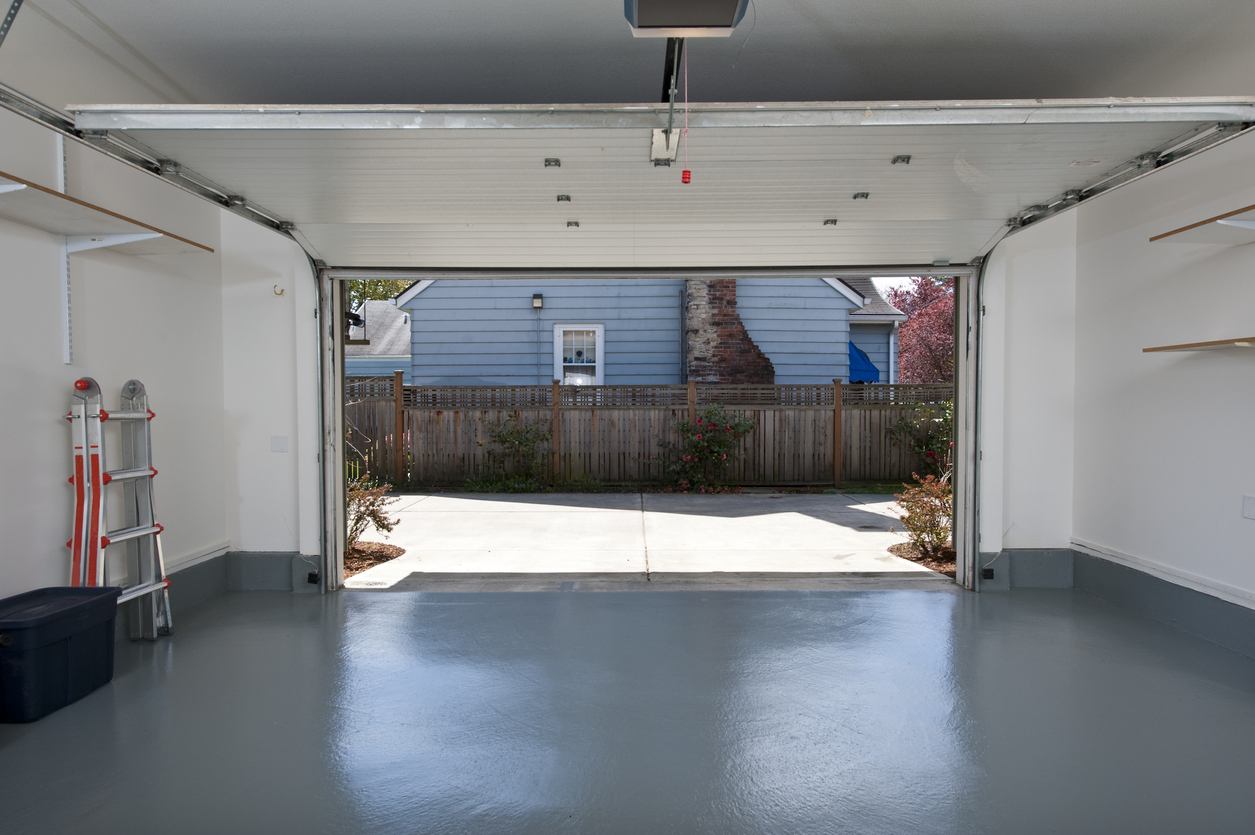Like all areas of your Blackhawk, CA area home, a garage is a highly functional space. It is where you store your vehicles and tools for your car, garden, and household repairs. But a garage should look good, too, which starts with choosing suitable paint colors.
Choosing the right paint colors for your garage interior is crucial, as it enhances the overall aesthetics and improves functionality. The right color can make the space feel brighter, more organized, and even more inviting, transforming it from a mere storage area into a functional extension of your Livermore. CA home.
Considering the purposes of the garage
Different uses for a garage
- Workshop: Garages can be converted into workshops for woodworking, metalworking, crafting, and other activities. This setup often includes workbenches, tool storage, and ample lighting.
- Storage: Garages in Diablo, CA are commonly used for storing household items, outdoor equipment, seasonal decorations, or even excess furniture. Shelving units, cabinets, and bins are typically utilized to organize the space.
- Parking: The traditional use of a garage is for parking vehicles. This use prioritizes car space, with possible additional room for tools or small storage.
How the intended use affects color choices
- Workshop: Bright, neutral colors like white or light gray are ideal for workshops, as they enhance visibility and create a clean, focused environment. These colors also help reflect light, which is crucial for detailed tasks.
- Storage: For a storage-focused garage, neutral and calming colors like beige or soft blue can create an organized and clutter-free feel. Darker colors might be used to make the space appear more compact if it’s primarily for overflow storage.
- Parking: For a garage used primarily for parking, practical colors like gray or tan are popular as they hide dirt and grime well. Durable, easy-to-clean finishes are crucial to maintain a neat appearance.
Popular color choices
When choosing colors for a garage, the options can significantly impact both aesthetics and functionality:
- Neutral colors: Shades like gray, beige, or white are a favorite for a clean, versatile look. They create a blank canvas that can adapt to garage use changes, making the space feel organized and spacious.
- Bright colors: Opting for bright colors like yellow, light blue, or green can enhance visibility, making it easier to find tools and navigate the space. These colors also create a more cheerful and inviting atmosphere, counteracting the typically utilitarian feel of a garage.
- Darker colors: Dark shades like deep gray, navy, or charcoal are ideal for high-traffic areas. They effectively hide dirt, oil stains, and other marks, maintaining a tidier appearance with less frequent cleaning.
Each color choice serves different needs, so consider the garage’s primary function and the overall desired look when selecting a color.
Effect of lighting on color perception
Here’s how lighting affects color perception in garages:
Natural and artificial lighting impact
- Natural lighting: Sunlight changes throughout the day, affecting how paint colors appear. Morning light is cooler and bluer, while afternoon light is warmer. Colors may appear brighter and more vibrant in natural light, especially if the garage has large windows or is exposed to direct sunlight.
- Artificial lighting: The type of artificial light (e.g., LED, fluorescent, or incandescent) can alter how colors are perceived. Fluorescent lights often cast a cooler, bluish hue, while incandescent bulbs emit a warmer, yellowish light. LED lights can vary widely, but frequently, they are designed to mimic natural light. Depending on the type of artificial lighting used, colors might appear duller, cooler, or warmer than under natural light.
Tips for testing paint samples
- Test paint at different times: Apply paint samples to the garage walls and observe them at varying times of the day to see how natural light affects the color.
- Use multiple light sources: Test the paint samples under the types of artificial lighting you plan to use in the garage. Try the lighting at full brightness and dimmed settings, if possible.
- Apply large samples: Paint a large enough section (at least 2×2 feet) to get a good sense of the color’s appearance.
- Check from different angles: Walk around the garage and observe the paint samples from various angles, as lighting can create shadows and highlights that affect color perception.
These steps will help ensure your chosen color looks as expected under all lighting conditions in your garage.
Durability and finish
Durability and ease of maintenance are critical considerations when selecting paint for a garage due to the unique demands of this space. Here’s a brief overview:
Durability and finish
- Durability: Garages are exposed to heavy wear and tear, including vehicle traffic, spills, and temperature fluctuations. Durable paints resist chipping, staining, and fading, ensuring the garage looks good and is protected over time.
- Easy-to-clean finishes: A finish that is easy to clean, like semi-gloss or gloss, is ideal for garages. These finishes repel dirt, grime, and oil, and they can be wiped down without degrading the paint.
Paint type recommendations
- Epoxy paint: This is one of the most durable options for garage floors. Epoxy creates a hard, glossy surface that withstands heavy traffic, chemicals, and moisture. It’s also easy to clean and highly resistant to staining.
- Latex paint: Latex paint is a good choice for garage walls and ceilings. It’s more affordable, easy to apply, and can handle the occasional bump or spill. Use latex enamel paint with a satin or semi-gloss finish for extra durability.
Choosing the right paint type and finish for your garage ensures long-lasting protection and an easy-to-maintain space.
Complementing the overall home design
To ensure your garage colors harmonize with the rest of your Diablo, CA home’s interior and exterior, consider the following:
Color continuity
- Exterior harmony: Choose a garage color that complements the exterior facade. It might mean matching the trim or siding color or opting for a neutral tone that blends seamlessly with the rest of the house.
- Interior flow: If the garage connects to the home, consider using tones similar to the adjacent interior rooms. It creates a smooth visual transition from the inside to the outside.
Cohesive design ideas
- Accent colors: Use accent colors from the exterior, like door or window trim, for the garage door or interior walls. It ties the garage into the broader color scheme of the house.
- Materials and finishes: If your home features specific materials like wood or stone, incorporate these into the garage design through the door style or interior elements like shelving.
- Lighting: Use similar lighting fixtures in the garage as in the rest of the home, ensuring a consistent style and feel.
Pay attention to these elements to make your garage feel like a natural extension of your home’s design.
Practical tips for painting the garage interior
Preparation steps for a successful garage painting project
- Clear the space: Remove all items from the garage, including vehicles, tools, and shelving, ensuring you have full access to all surfaces.
- Clean the surfaces: Thoroughly clean the walls, ceiling, and floor to remove dust, dirt, and grease. Use a power washer or a stiff brush with detergent for stubborn stains.
- Repair and patch: Inspect the walls and ceiling for cracks, holes, or other imperfections. Apply a suitable filler and sand them smoothly once dry.
- Mask and protect: Use painter’s tape to mask off areas you don’t want to paint, like windows, outlets, and trim. Cover the floor with a drop cloth if you paint the walls and ceiling.
- Prime the surfaces: Apply a coat of primer to the walls, ceiling, and other surfaces to ensure better paint adhesion and coverage.
Best practices for applying paint in a garage setting
- Choose the right paint: Use high-quality, durable paint designed for garages or high-traffic areas. Epoxy-based or latex paint with a satin or semi-gloss finish is often preferred for its durability and ease of cleaning.
- Maintain proper ventilation: Ensure good ventilation by opening windows and doors, and consider using fans to help with air circulation while painting. It reduces fumes and helps the paint dry evenly.
- Apply in thin coats: Apply the paint in thin, even coats to avoid drips and ensure a smooth finish. Apply multiple thin coats instead of one thick coat.
- Use the right tools: Use a roller with an extension pole for larger areas and a brush for corners and edges. A high-quality roller cover will help achieve a smooth finish.
- Allow adequate drying time: Follow the manufacturer’s instructions for drying time between coats, and ensure each layer is dry thoroughly before applying the next.
- Inspect and touch up: After the paint has dried, inspect the work for any missed spots or uneven areas and touch up as needed.
Common mistakes and how to avoid them
When painting a garage, several common mistakes can lead to poor results. Here’s how to avoid them:
Frequent errors in choosing and applying garage paint and tips to avoid such issues
Choosing the wrong paint type: Many people use interior paint or basic exterior paint, which isn’t designed for the harsh environment of a garage. This can lead to peeling, chipping, and fading.
- Tip: Use epoxy-based or specific garage floor paints for durability and resistance to chemicals, oil, and high traffic.
Inadequate surface preparation: Skipping or rushing surface preparation can result in poor adhesion and uneven coverage.
- Tip: Clean the surface thoroughly to remove dirt, grease, and oils. Patch any cracks and sand the surface for better adhesion.
Ignoring primer: Some skip priming, thinking it’s unnecessary, but this often results in uneven color and poor adhesion.
- Tip: Always use a primer, especially on bare concrete or previously unpainted surfaces, to ensure better paint adherence and even coverage.
Selecting the wrong finish: Using a flat or matte finish may lead to difficulties in cleaning and maintenance.
- Tip: Choose a satin or semi-gloss finish, which is more durable and easier to clean, especially in a garage setting.
Painting in the wrong conditions: Painting in extreme temperatures or high humidity can cause the paint to cure improperly, leading to peeling or bubbling.
- Tip: Paint when temperatures are between 50°F and 85°F (10°C and 29°C), and avoid very humid conditions.
Select the correct materials and follow proper preparation steps carefully to avoid these common pitfalls. It will help you achieve a professional finish in your garage.
Conclusion
When planning your next painting project, take the time to carefully choose colors that enhance the appearance of your space and improve its functionality. Thoughtful planning will ensure a professional finish that elevates your home or business. For expert advice and high-quality results, contact Custom Painting, Inc. Call us at 925-866-9610 or use our contact form. Our team focuses on providing quality service, exceptional experience, and customer satisfaction.




